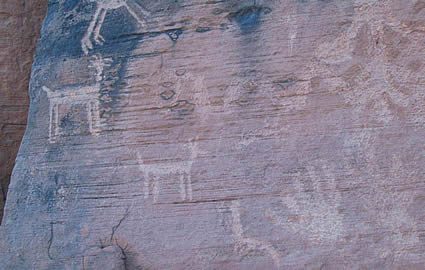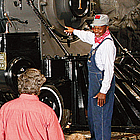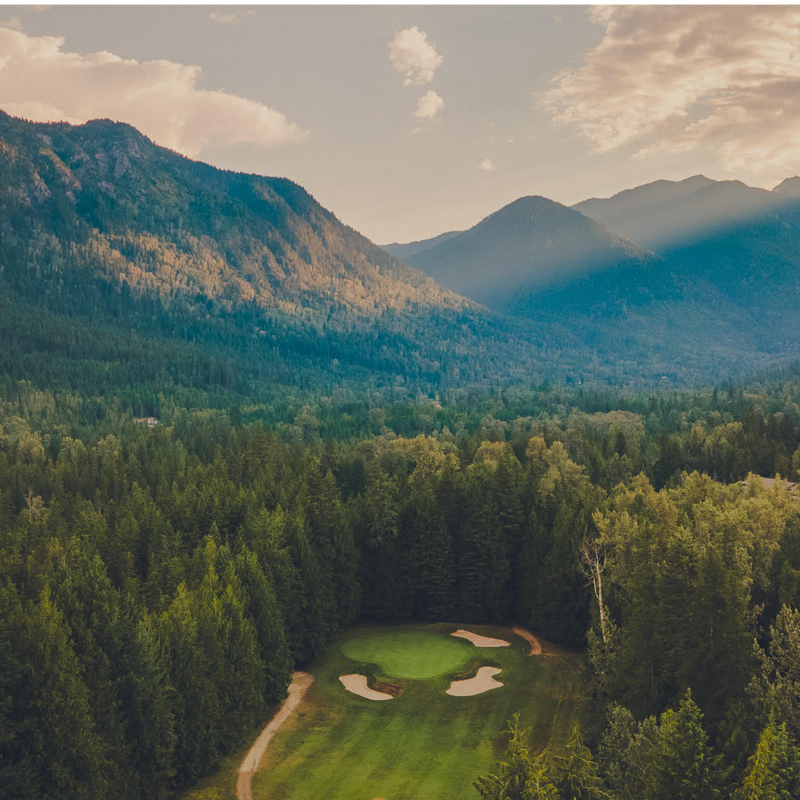Petroglyphs and pictographs
Defining and explaining a spiritual form of historic artwork

Did you ever wonder what was in the direction of the brown sign that reads, "petroglyphs?" Should you take your large, expensive RV down this road, away from
the route you were travelling to get to your campground or resort? What are petroglyphs? Are they the same as pictographs?
This article will attempt to define the terms, explain what the symbols might mean, and, finally, where you might see some of these sites.
But before we start, there are two points that need to be made, as follows:
1. There is no uniform agreement among experts as to what certain symbols actually mean, although opinions of some of the experts who interviewed Native Americans in the late 1800s and early 1900s are well respected, and,
2. When visiting a site, visitors should not touch, alter or deface the art work. Leave the art for others to enjoy.
Now, for some definitions.
Petroglyphs are scenes engraved or chipped into rock. Time then allows a patina or varnish to form. The depth of the varnish is related to the age. The deeper the varnish, the older the engraving.
Pictographs are drawings painted on the rock. White, black, orange and red were the predominant colours used. These colours were derived from berries or minerals. Black was the colour most used by male artists. Red was the favourite colour of females.
As mentioned above, there is no agreement as to the meanings of the symbols, but a 1920s theory has the greatest acceptance. The creation of this rock art is tied to visions that the Shaman experienced or was related to ritual initiations, like puberty rites, for both males and females. Many of the sites in the far northwestern part of North America are less than 1,000 years old. Others in the southwest go back to the Pleistocene period, more than 11,000 years ago. The natives of California and Nevada were hunter-gatherers, as there was little water for farming. So, many of the motifs have to do with hunting or war, as the Native Americans frequently fought with one another.
The artwork also expresses their belief in a supernatural world, with the key figure being the Shaman or medicine man. The Shaman would enter a trance, experience a vision, and then record it shortly after awakening. While in the trance, he would gain supernatural power from a spirit helper. Common symbols found at many sites are bison, hunters, stick-like human figures, lizards and water. The meaning of each of these symbols is still disputed by experts today, but the viewer can form his own theory by studying the art work, looking at the surrounding area and imaging what happened here many years ago. As an example of this complex theme, here are some sites in a part of California within reach of many snowbirds from up north.
Pleasant Valley Petroglyphs in the Coachella Valley
This site contains two possible representational engravings. One is a diagrammatic drawing of a human and the other is a figure having the form of a lizard, the messenger to the supernatural. The site has deeply varnished rock which is very different than that found elsewhere. Access to Pleasant Valley requires a four wheel drive vehicle.
The Fish Trap Petroglyphs in the Coachella Valley
This site is on the shore of the Salton Sea and ancient Lake Cahuilla. Native Americans used the lake to provide food, fish and waterfowl. Due to changes in the level of the lakeshore, these Native Americans were always moving. Unique to Lake Cahuilla are deposits of Travertine, a mineral which forms a soft coating on flooded rocks, which covers the art. These are found mostly on the western shore. There is a small petroglyphs site with about twelve motifs: large stick-like human figures and others that are more complex. These engravings were created in the last five hundred years, apparently by the Cahuilla Indians.
Morteros Village Pictographs in Anza-Borrego Desert State Park
The Kumeyagy people left two small sites in what is now the State Park. The art found here consists of: Shamans’ drawings depicting the spirits and events they saw in the supernatural. The spirit young girls saw during their puberty initiations was painted in red on the rocks.
Young boys used black paint to record what they saw during their ordeals. This site is connected with Little Blair Valley Pictographs and is off of Hwy. 78. Ask at the Park Visitor Center for directions.
Lake Perris pictographs
Girl’s puberty sites are common and there are three in Riverside County alone. Lake Perris State Recreation Area in Moreno Valley east of Riverside is one of these. The snake symbol is dominant on this pictograph of red motifs. This symbol occurs frequently at girls puberty sites through Southwestern California.
To reach Lake Paris requires a one hour walk round trip. From CA 215 head east on the Ramona Expressway, turn left onto the second road leading to Lake Perris. This is the Bernasconi Pass entrance about 6.7 miles from the freeway.
Tomo-Kahui State Park in Tehachapi, CA
Red, white, black and orange bear and snake paintings are based on the south-central culture of Rock Art. It is painted rather than pecked. Access to the site is by guided visit only. The state park is located a few miles east of Tehachapi on Sand Canyon Road north of CA 58. For information and reservations contact the Lancaster office of California State Park System at 805-942-0662.
Titus Canyon petroglyphs
Titus Canyon leads into Death Valley National Park, the hard way, I might add, and this area was the home of the Shoshone Indians and the Southern Paiutes. These Native Americans survived in a very hostile environment, living by their wits and by their intimate knowledge of the region and its resources. They left behind a small petroglyphs site adjacent to a small spring. This reinforces the modern interpretation that water allows entry into the supernatural. Many different types of petroglyphs can be seen here.
These are believed to be less than one thousand years old and are located immediately east of Titus Spring on a large boulder alongside the road. Access to Titus Canyon is from Beatty, NV on NV 374, and the site is about eighteen and a half miles into the canyon. A four-wheel-drive vehicle is recommended. Avoid the road in rainy weather.
Barker Dam Petroglyphs in the Coachella Valley
Although this site was vandalized some decades ago by a movie company, the rock art is still of interest. The pictographs are located in Joshua Tree National Park (an entrance fee is required) and contain about twenty-four motifs-a good variety of vision quest art. Circle headed stick figures, double diamonds, big horn sheep, etc. are found here. The big horn sheep is thought to be a spirit helper, the rain Shaman. This site is best viewed in conjunction with the one at Pleasant Valley, also in the park, and is located off of CA 62, coming from Palm Springs.








